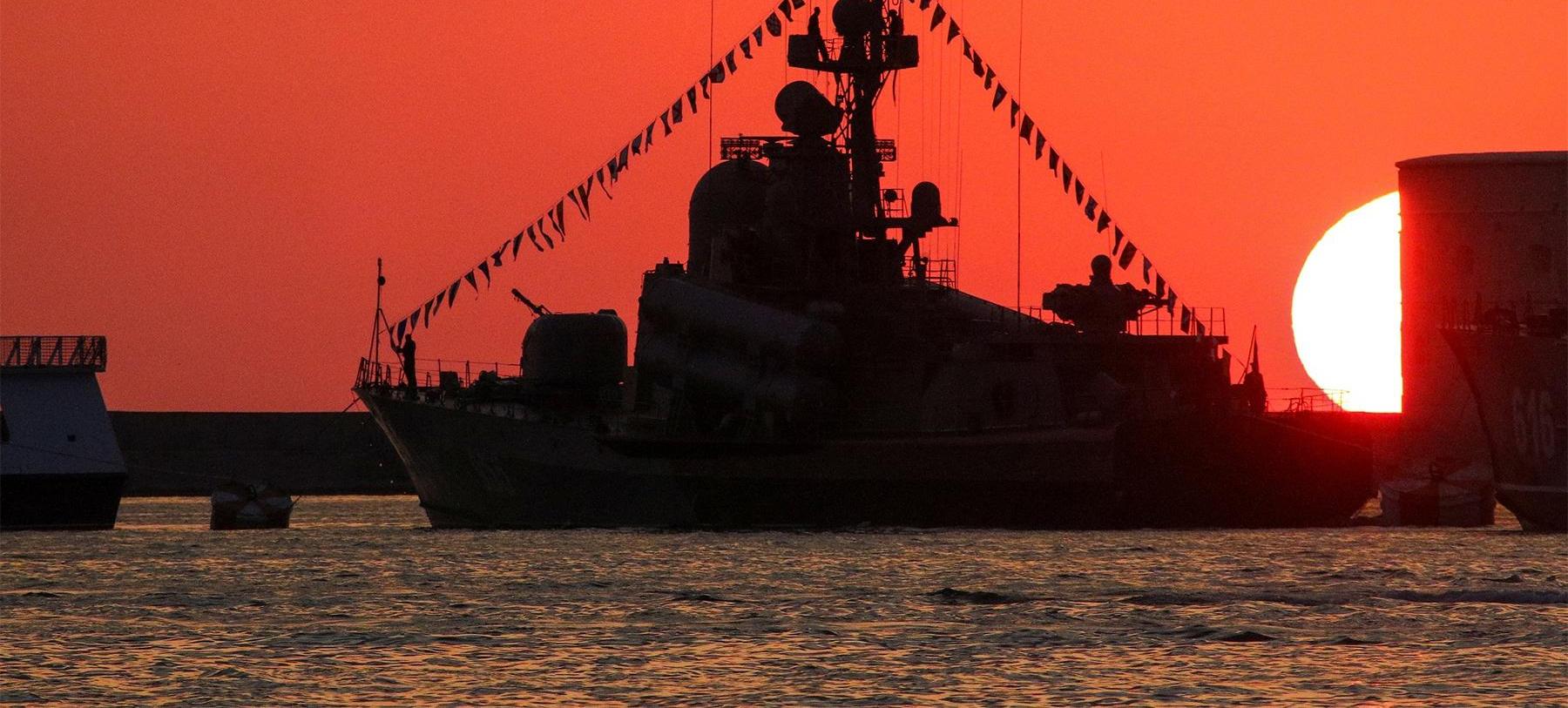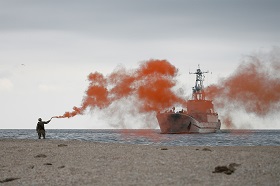Following an October meeting of the NATO-Ukraine Commission in Brussels, Ukraine expressed its desire to be included in the “Partnership Interoperability Initiative” (PII)[1]. This statement was not met with any active response from the Russian government — as Moscow has long since come to terms with Kyiv’s pro-Western turn — or from the Russian media or expert community. But this request speaks to Ukraine's serious reassessment of its position concerning NATO. Conceptually, Ukraine's position remains unchanged: Kyiv orients itself toward NATO, neither Russia nor neutrality. But at a strategic level, the situation is changing.
It's no secret that Kyiv longs to join the Alliance. The gold standard for such entry was the following path of participation — a program that would tighten a country's ties with NATO. First — the Partnership for Peace program (PfP), second — the Individual Partnership Action Plan with NATO (IPAP) and third — the Membership Action Plan (MAP) and then entry into the Alliance itself. This is the path that all countries that joined the Alliance after 1999 have taken. In 2008, at the NATO summit in Bucharest, Ukraine and Georgia were denied a MAP, but the Alliance confirmed that someday these two countries would join NATO. In response, Russia called Ukraine's desire for NATO membership "hostile." In 2009, the Annual National Program was developed for Kyiv, and later that year, a Declaration was signed to supplement the Charter on Partnership between NATO and Ukraine. Since then, there has been a NATO-Ukraine Commission, which is the primary platform for all initiatives and cooperation programs. And at the last meeting, the question of the country's participation in the PII was raised.
We assume that, at the very least, Ukraine's offer will not be approved in the near or medium-term future. For one, during the COVID-19 epidemic, NATO has more urgent challenges for discussion. Secondly, Hungary will block any further steps towards developing relations between the Alliance and Kyiv until the fundamental issue of minority rights is resolved. Thirdly, should the Alliance move to admit Ukraine into the program, Moscow will once again become nervous (although not significantly more so). Fourth, Ukraine's current program in NATO allows it to work actively in the framework of the Alliance as it is. Fifth, all participants in enhanced cooperation programs are important parts of NATO's security system: Australia in Southeast Asia, Jordan in the Middle East, Finland and Sweden in the Baltic and Arctic, and Georgia in the Caucasus and the Black Sea. What exactly Ukraine's contribution could look like is not exactly clear. The country, in reality, does not control its strategic points (Crimea in the Black Sea and the country's eastern border regions with Russia) and is otherwise locked inside Europe. Essentially, this sort of membership is beneficial only for Kyiv, with it having no practical benefits for NATO.
Following an October meeting of the NATO-Ukraine Commission in Brussels, Ukraine expressed its desire to be included in the “Partnership Interoperability Initiative” (PII)[1]. This statement was not met with any active response from the Russian government — as Moscow has long since come to terms with Kyiv’s pro-Western turn — or from the Russian media or expert community. But this request speaks to Ukraine's serious reassessment of its position concerning NATO. Conceptually, Ukraine's position remains unchanged: Kyiv orients itself toward NATO, neither Russia nor neutrality. But at a strategic level, the situation is changing.
It's no secret that Kyiv longs to join the Alliance. The gold standard for such entry was the following path of participation — a program that would tighten a country's ties with NATO. First — the Partnership for Peace program (PfP), second — the Individual Partnership Action Plan with NATO (IPAP) and third — the Membership Action Plan (MAP) and then entry into the Alliance itself. This is the path that all countries that joined the Alliance after 1999 have taken. In 2008, at the NATO summit in Bucharest, Ukraine and Georgia were denied a MAP, but the Alliance confirmed that someday these two countries would join NATO. In response, Russia called Ukraine's desire for NATO membership "hostile." In 2009, the Annual National Program was developed for Kyiv, and later that year, a Declaration was signed to supplement the Charter on Partnership between NATO and Ukraine. Since then, there has been a NATO-Ukraine Commission, which is the primary platform for all initiatives and cooperation programs. And at the last meeting, the question of the country's participation in the PII was raised.
The PII was launched in 2014 at the Wales Summit and gave five countries — Finland, Sweden, Jordan, Australia and Georgia — membership in an enhanced partnership and status as an "enhanced opportunity country," or EOC. These countries have more opportunities to participate in joint exercises and programs with NATO. The main advantage of this program in comparison with similar ones is the close exchange of intelligence data. But this initiative has deep political and symbolic meaning as well. In our opinion, this program is comprised of those countries with which the Alliance would like to have close relations, but which for internal, geographic and military-political reasons cannot be part of NATO. This is a club of privileged partners, and to be in it means being important for the Alliance. It is important, though, that this program was launched in 2014 and the countries that joined NATO after 2014 were not former PII participants. Joining the Alliance used to be the main strategic goal of Ukraine. Has this changed?
There are several main reasons why Kyiv would wish to be a participant in the PII. Firstly, the country's entry into this elite club would demonstrate to Moscow that Kyiv is a privileged partner, instead of a guest, forever stuck waiting on the threshold of NATO. In truth, Kyiv’s entry into yet another program, even such a deep partnership, is unlikely to cause particular concern for Moscow. Of course, Moscow will issue an official political reaction that condemns Ukraine's actions, but no more. Ukraine is already working quite deeply with NATO, and another cooperation program will come as no surprise to Moscow. Secondly, Ukrainians would perceive this as an important success of the new president in overcoming stagnation in the country's relations with the Alliance and enhancing Ukraine's partnership with the West. Thirdly, participation in such a program is practical, as it would allow Ukraine to participate in more exercises and programs that are available only to the closest partners.
But why did the Ukraine request participation in the PII and not a MAP — a proven way of joining the Alliance? We believe that this is an important decision. Ukraine bid farewell to its dream of becoming a member of NATO and followed the path of Georgia. Tbilisi was also slated to join NATO after some time, but the country's territorial disputes were objective reasons that made accession into the Alliance impossible, in contrast to, as NATO claimed, Georgia's insufficient measures in the fight against corruption. And no "Rasmussen approach," as voiced by former NATO Secretary-General in September 2019 at a forum in Georgia about the limited application of Article 5 only under the control of the territory of Georgia (except Abkhazia and South Ossetia), is capable of changing the current situation in the Caucasus. Neither can numerous statements from NATO on Brussels' commitment to Georgia’s future entry into NATO. Firstly, there is opposition in Georgia. If such a variant was accepted, it would mean that Georgia agrees with the absence of control over Abkhazia and South Ossetia. Secondly, the "Article 5 with limits" variant could also mean that NATO automatically acknowledges Abkhazia and South Ossetia. Neither Georgia nor NATO would allow for that [2]. A similar situation has developed with Ukraine. The problems in eastern Ukraine and Crimea and Russia’s attitudes towards these issues will not allow the country to join the Alliance. NATO is not prepared to directly intervene in the Donbass. Another serious obstacle is Hungary's opposition to Ukraine's entry into the Alliance: According to the established procedure, all 30 NATO members must agree on accession for a country to be admitted[3]. The example of North Macedonia and Greece shows that countries can be very principled, and the rule of consensus gives them serious leverage to uphold their positions. Kyiv chose the path of least resistance. If joining the Alliance is not possible, then establishing as close a relationship with it as possible is the next best alternative. Moreover, this decision will undoubtedly be perceived positively by Ukraine's populace as an essential foreign policy success. But will NATO agree to accept this offer?
In truth, one cannot say for sure. We assume that, at the very least, Ukraine's offer will not be approved in the near or medium-term future. For one, during the COVID-19 epidemic, NATO has more urgent challenges for discussion. Secondly, Hungary will block any further steps towards developing relations between the Alliance and Kyiv until the fundamental issue of minority rights is resolved. Thirdly, should the Alliance move to admit Ukraine into the program, Moscow will once again become nervous (although not significantly more so). Fourth, Ukraine's current program in NATO allows it to work actively in the framework of the Alliance as it is. Fifth, all participants in enhanced cooperation programs are important parts of NATO's security system: Australia in Southeast Asia, Jordan in the Middle East, Finland and Sweden in the Baltic and Arctic, and Georgia in the Caucasus and the Black Sea. What exactly Ukraine's contribution could look like is not exactly clear. The country, in reality, does not control its strategic points (Crimea in the Black Sea and the country's eastern border regions with Russia) and is otherwise locked inside Europe. Essentially, this sort of membership is beneficial only for Kyiv, with it having no practical benefits for NATO.
List of sources
1. Statement of the NATO-Ukraine Commission // NATO URL: https://www.nato.int/cps/en/natohq/official_texts_170408.htm.
2. «План Расмуссена»: какую цену заплатит Грузия за вступление в НАТО // Eurasia Expert URL: https://eurasia.expert/plan-rasmussena-kakuyu-tsenu-zaplatit-gruziya-za-vstuplenie-v-nato/ (дата обращения: 10.04.2020).
3. Hungary to block Ukraine's NATO membership over language law // REUTERS URL: https://www.reuters.com/article/us-ukraine-nato-hungary/hungary-to-block-ukraines-nato-membership-over-language-law-idUSKBN1Y823N.






